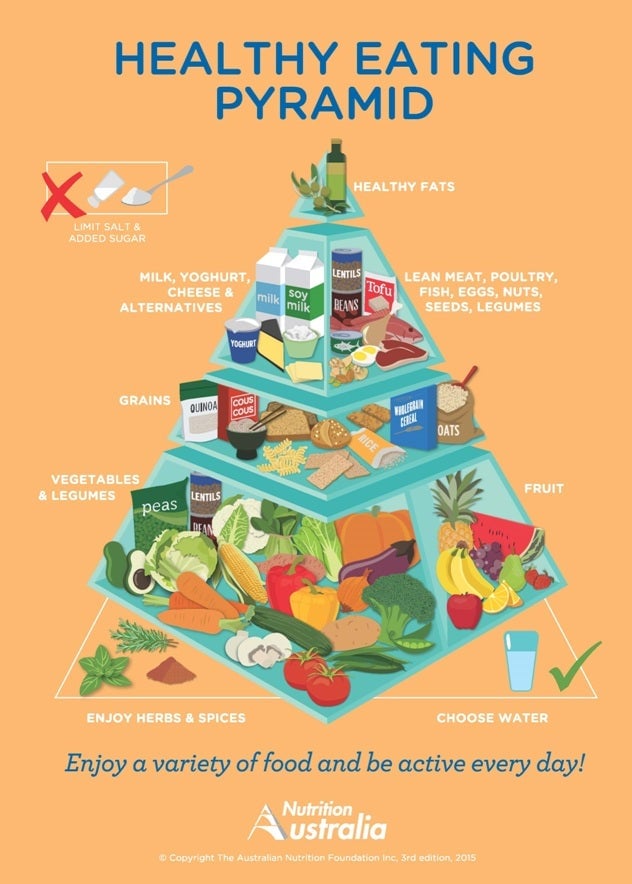Australia’s new food pyramid eliminates butter and sugar and adds tofu and soy milk
The average Australian gets more than a third of their daily energy intake from junk foods, according to government surveys. That isn’t good enough for Nutrition Australia, which released a new healthy food pyramid this week to combat growing confusion and risky fad diets.


The average Australian gets more than a third of their daily energy intake from junk foods, according to government surveys. That isn’t good enough for Nutrition Australia, which released a new healthy food pyramid this week to combat growing confusion and risky fad diets.

Junk-food makers probably won’t like the new pyramid. The foundation layers include only plant-based foods. At the bottom are fruits, vegetables, and legumes (think peas and lentils), followed by grains (oats, quinoa, couscous, and wholegrain cereal). The next layer includes milk, yoghurt, cheese and alternatives, plus lean meat, poultry, fish, eggs, nuts, and seeds (soy milk and tofu make an appearance here).
At the top are “healthy fats,” as opposed to saturated fats and trans fats. These can be found in unrefined polyunsaturated and monounsaturated fats from plant sources, such as extra virgin olive oil, nut and seed oils. Fish and avocados also provide healthy fats. Butter, which has been in Australia’s healthy food pyramid since it started, has been eliminated altogether, as has margarine and sugar.
Next to the pyramid is a warning about junk food. The pyramid’s web page elaborates:
Consuming a lot of added sugars, especially from foods like lollies, chocolate, cakes, biscuits, desserts and soft drink, can add extra kilojoules to your diet. This can lead to weight gain and increase your risk of developing type 2 diabetes, cardiovascular disease and some cancers.
Nutrition Australia first released a health food pyramid in 1980. The pyramid has evolved through the years. The new one is based on the 2013 Australian Dietary Guidelines.